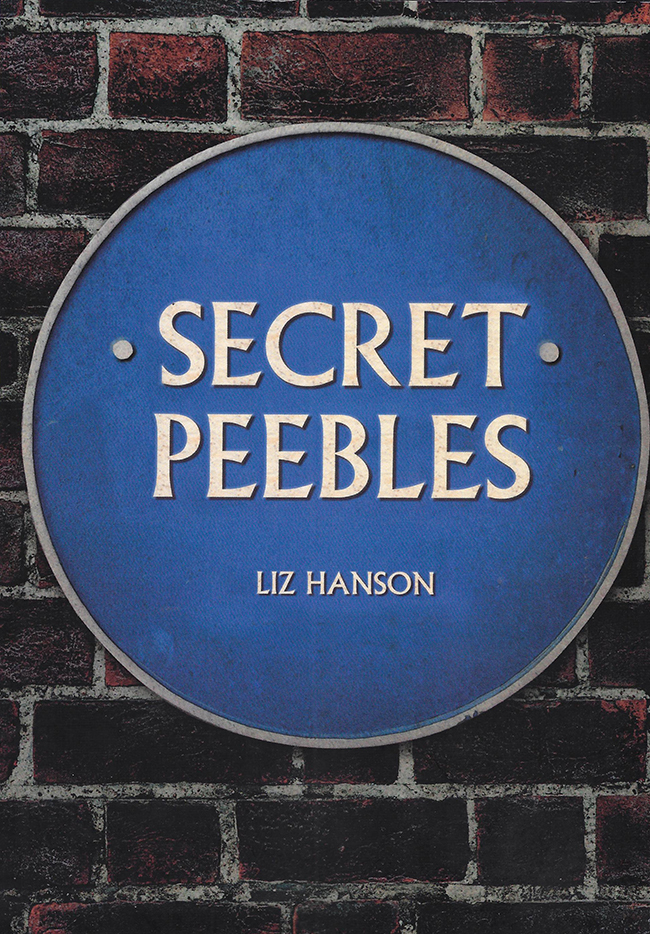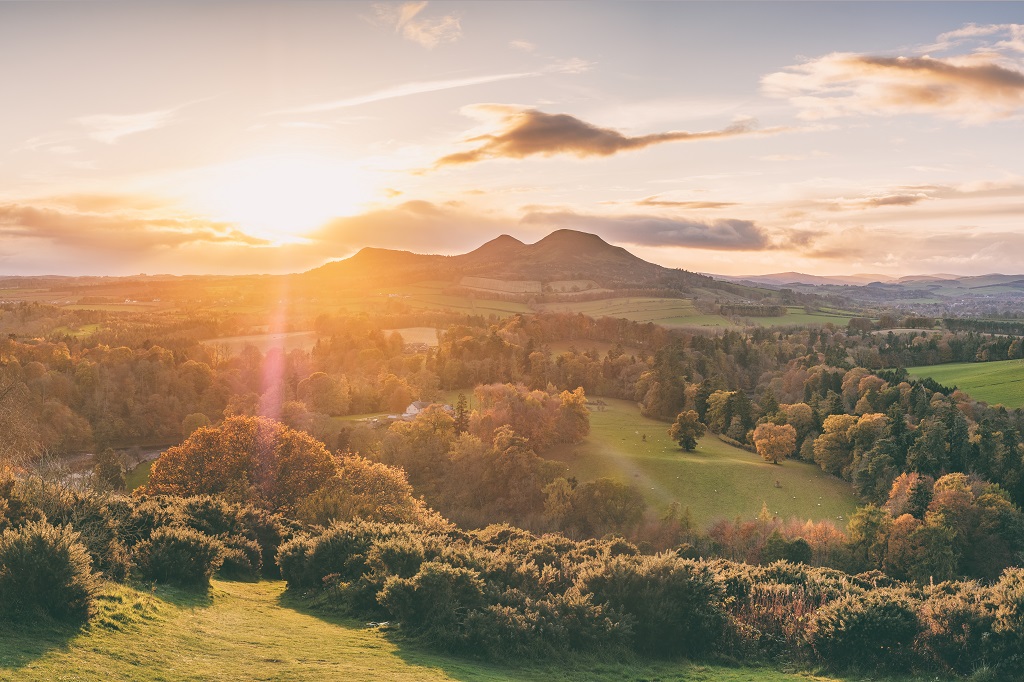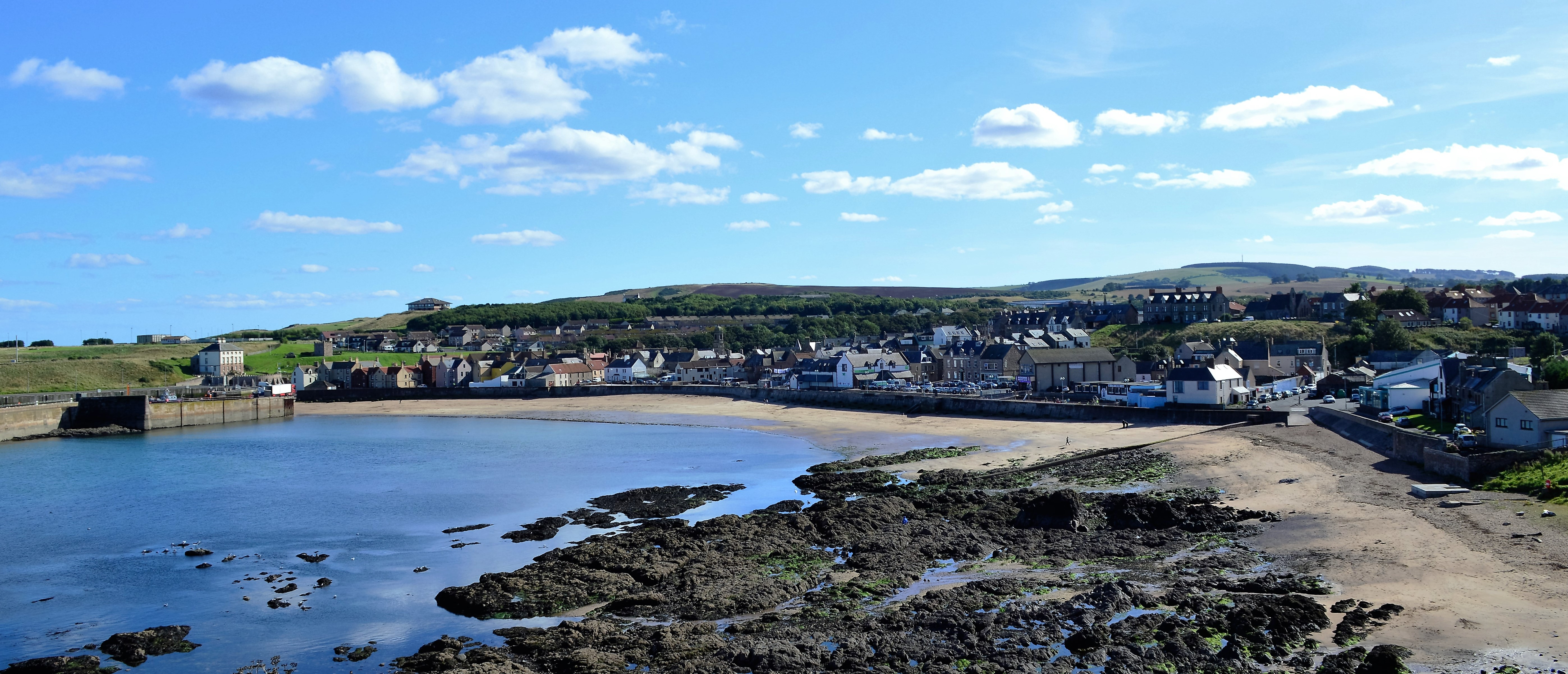With the warm springtime weather approaching – despite all signs so far pointing towards the contrary – walkers can again enjoy all the majestic wonders and picturesque landscapes that Scotland has to offer free of snow and sleet.
With a plethora of history and mapped out walking routes, the Scottish Borders are the perfect place for adventurers to go exploring. Here at Scottish Field, we have comprised our list of the Top 10 Walking Routes in the Scottish Borders.
Melrose to Old Melrose, Melrose
The intermediate Melrose to Old Melrose path is a fascinating Route that passes Trimontium – an important Roman Military complex – and the Rhymer’s stone. Old Melrose is famed as being one of the earliest Anglo-Saxon monasteries in northern Britain and the first spiritual home of St Cuthbert. The Melrose to Old Melrose trail is a total of eight miles with minor roads and mainly good paths, frequently across open country so boots or walking shoes would be recommended. Walkers can also enjoy the comfort of a quick cuppa’ along the trail at one of the old estate building cafes.

Picturesque PeeblesJohn Buchan Way, Peebles
Connecting Peebles and Broughton through the hills and valleys of Tweeddale, the John Buchan Way is a 13 mile long linear route. The trail is named after the famous writer John Buchan, whose family is strongly linked with the area. The vast majority of walking on the trail takes place across grass paths and hillside tracks with a few short sections of road. Walkers can expect breathtaking views over the Moorfoot Hills, the head of the Manor valley and the hills of Dollar Law from the trail’s most elevated points.
Innerleithen History Trail, Innerleithen
One of the Scottish borders’ shorter walks, at only two miles the Innerleithen History Trail is any easy way to explore the area’s heritage and the ability to visit the Iron Age Fort on Pirn Hill (which was the homestead of a farming community around 2000 years ago) only adds to this fascinating experience. The route was set out by local historians and gives walkers an insight into the history of the town while exploring the pavement and woodland paths. As well as this, the trail includes two museums – St Ronan’s Wells and Robert Smail’s Printing Works.
Morebattle to Jedburgh, Jedburgh
Walkers can enjoy this 10 mile long journey from Morebattle to Jedburgh by following St Cuthbert’s Way and the Borders Abbeys Way. This route includes sections of road, tracks and paths and passes the ancient ruin of Cessford Castle – which originally had walls that were fourteen feet thick. Once arriving in Jedburgh, walkers can enjoy the many attractions that the town has to offer which include the Mary Queen of Scots Visitor Centre; Harestanes Countryside Visitor Centre; Jedburgh Castle Jail and Museum and Jedburgh Abbey.

Scott’s View looking to the Eildon Hills
Eildon Hills Path, Melrose
Despite the fact that the Eildon Hills Path isn’t a particularly long circular route, the trail has steep sections on the Eildons which naturally increase the time the route will take to complete. The Eildon Hills are a picturesque addition to the Scottish Borders landscape which supplies walkers with breathtaking views from their peaks. On a clear day, observers can look out upon the Lammermuirs, Moorfoots and Upper Tweeddale Hills in awe. Although the track is only a short distance of four miles, some of the paths along the way are quite narrow and can be muddy with steep gradients on the Eildon Hills.
Tweedbank and Abbotsford, Melrose
A short circular route, the Tweedbank and Abbotsford walk begins from the railway station passing by Gunknowe Loch at Abbotsford and returns via the Boarders Abbey Way along the River Tweed (Scotland’s fourth largest river). The short four mile long route would be an ideal spot for fishing enthusiasts to explore as the River Tweed is internationally famous for its salmon fishing. It ranks amongst the world’s top salmon rivers in the world and in 2012 bragged a record catch of over 20,000 salmon. The route consists mainly of woodland paths and is perfect for a short stroll.
The Two Bridges, Kelso
The Two Bridges route – as its name might suggest– involves walkers passing over two bridges which cross the River Tweed, the iconic Rennies Bridge and the more modern Hunter’s Bridge. Rennies Bridge was designed by John Rennie of Haddington and was opened in 1803 as a smaller version of Loondon’s Waterloo Bridge. The Hunter Bridge was opened in 1998 and bypasses the town of Kelso to the east. The Two Bridges route also allows walkers to marvel at some of Kelso’s historic monuments such as the ruins of Kelso Abbey.

Boats in Eyemouth Harbour
Eyemouth Fort and Harbour, Eyemouth
Only two miles long, this short circular route takes walkers from the town of Eyemouth to the mesmerising coastline of Killiedraught Bay. Eyemouth fort itself was designed by Sir Richard Lee and first built in 1547 before being enlarged by the French in 1557. Upon following the path around to Killiedraught Bay walkers can enjoy picturesque views of St Abbs Head in the distance. The route is a chance to really explore old and new parts of the town of Eymouth and discover the history of the area.
Peel and Yair, Galashiels
Moderate of length (seven miles), the Peel and Yair route includes a climb up to Neidpath Hill were walkers can delight in stunning views of the Moorfoot Hills. Along the route, you will also be able to view the Caddonfoot Church nestled into the hillside below Meigle Farm which was built in 1861 and was designed by Alexander Pringle of Whytbank. As well as this, partly following the Southern Upland Way walkers will descend alongside the delightful Blakehope Burn over-hung by moss laden alders.
Old Railway, Duns
Walkers can follow the old railway line that was a branch line of the East Coast Main line on this four mile long, figure of eight route. This branch line between Reston and Duns was opened in 1849 and was extended to meet the Hawick to Edinburgh line in 1865. After a nice relaxing walk along Duns’ old railway line, motoring enthusiasts can also enjoy the Jim Clark Room – which provides a comprehensive account of Clark’s motor racing career from his days as a district club competitor to a World Championship Formula One driver.
TAGS

